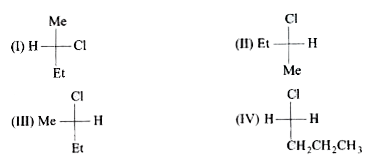In which of the following given examples, the value of Vmax changes while the K, value remains same?
Inhibition of succinate dehydrogenase by malonate
Inhibition of alcohol dehydrogenase to treat methanol poisoning
Inhibition of cytochrome oxidase by cyanide
Inhibition of folic acid synthesis in bacteria by sulpha drugs
The correct Answer is:C
To solve the question of which example shows a change in Vmax while the K value remains the same, we can break down the information provided in the video transcript step by step.
Step 1: Understand the Terms
- Vmax: The maximum rate of an enzyme-catalyzed reaction when the enzyme is saturated with substrate.
- K (Michaelis constant): A measure of the affinity of the enzyme for its substrate; it is the substrate concentration at which the reaction rate is half of Vmax.
Step 2: Types of Inhibition
There are two main types of enzyme inhibition:
1. Competitive Inhibition: The inhibitor competes with the substrate for the active site. In this case, Vmax remains the same, but the K value increases.
2. Non-competitive Inhibition: The inhibitor binds to an allosteric site, not the active site, which can change the Vmax while the K value remains the same.
Step 3: Analyze the Given Examples
1. Inhibition of succinate dehydrogenase by malonate: This is competitive inhibition, so Vmax remains the same, and K value changes.
2. Inhibition of alcohol dehydrogenase to treat methanol: This is also competitive inhibition, so Vmax remains the same, and K value changes.
3. Inhibition of cytochrome oxidase by cyanide: This is non-competitive inhibition, which means Vmax changes while K remains the same.
4. Inhibition of folic acid synthesis by N-bacteria by sulfa drugs: This is competitive inhibition, so Vmax remains the same, and K value changes.
Step 4: Conclusion
From the analysis, the example where Vmax changes while K remains the same is the inhibition of cytochrome oxidase by cyanide.
Final Answer
The correct example is: Inhibition of cytochrome oxidase by cyanide.
---
- Vmax: The maximum rate of an enzyme-catalyzed reaction when the enzyme is saturated with substrate.
- K (Michaelis constant): A measure of the affinity of the enzyme for its substrate; it is the substrate concentration at which the reaction rate is half of Vmax.
There are two main types of enzyme inhibition:
1. Competitive Inhibition: The inhibitor competes with the substrate for the active site. In this case, Vmax remains the same, but the K value increases.
2. Non-competitive Inhibition: The inhibitor binds to an allosteric site, not the active site, which can change the Vmax while the K value remains the same.
1. Inhibition of succinate dehydrogenase by malonate: This is competitive inhibition, so Vmax remains the same, and K value changes.
2. Inhibition of alcohol dehydrogenase to treat methanol: This is also competitive inhibition, so Vmax remains the same, and K value changes.
3. Inhibition of cytochrome oxidase by cyanide: This is non-competitive inhibition, which means Vmax changes while K remains the same.
4. Inhibition of folic acid synthesis by N-bacteria by sulfa drugs: This is competitive inhibition, so Vmax remains the same, and K value changes.
From the analysis, the example where Vmax changes while K remains the same is the inhibition of cytochrome oxidase by cyanide.
The correct example is: Inhibition of cytochrome oxidase by cyanide.
Topper's Solved these Questions
Similar Questions
Which of the following has highest value of Ksp ?
View SolutionWhich of the following have the same value of optical rotation ?

View SolutionWhich of the following has the highest value of Kp?
View SolutionWhich of the following has highest Ka value?
View SolutionWhich of the following do not change the value of K for a reaction?
View SolutionIn which of the following reaction, the value of Kp will be equal to Kc ?
View SolutionWhich of the following changes the value of the equilibrium constant ?
View SolutionIn each of the following, determine the value of k for which the given value is a solution of the equation:
(i)kx2+2x−3=0, x=2
(ii) 3x2+2kx−3=0, x=−12
(iii) x2+2ax−k=0, x=−a
View SolutionWhich of the following given ratio of units of length gives the highest value?
View SolutionWhich of the following gas should have maximum value for kH?
View Solution
